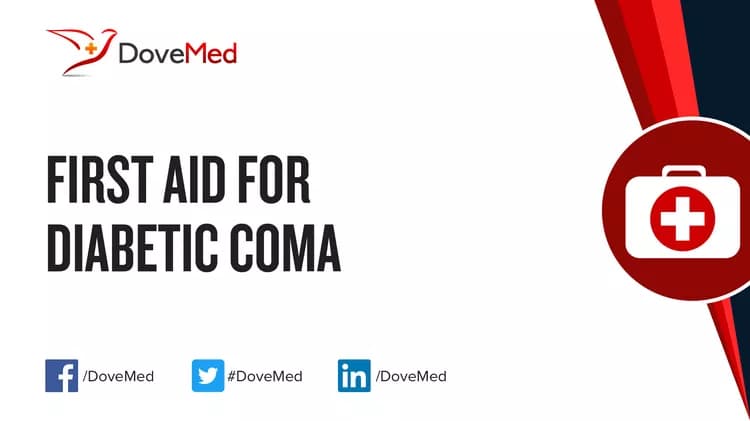IMPORTANT INFORMATION: Read This First
All incidents of Diabetic Coma should be evaluated by a trained medical professional, as soon as possible! DO NOT wait! Failure to obtain evaluation as soon as possible may result in serious injury or death. Call 911 (or your local emergency number) immediately, if you undergo a Diabetic Coma.
What is Diabetic Coma?
- Diabetic Coma is a condition caused by extremely high blood sugar levels and low insulin production
- The condition is a medical emergency and prompt treatment is important
What are the Causes of Diabetic Coma?
The cause of Diabetic Coma may include:
- Excessive sugar or carbohydrate intake
- Skipped diabetes medication/insulin shot
- Very low blood glucose levels
What are the Signs and Symptoms of Diabetic Coma?
The onset of signs and symptoms of Diabetic Coma is generally spread over a prolonged period. It may include the following:
- Increased thirst
- Increased urination frequency
- Dehydration
- Drowsiness, confusion or irritation
- Increased breathing rate
- Sweet-smelling breath
- Loss of consciousness
How is First Aid administered for Diabetic Coma?
First Aid tips for Diabetic Coma:
- Call 911 or your local emergency help number immediately, for emergency assistance
- Try to assess, if the individual has taken their diabetes medication after a meal
- Ensure that the affected individual is lying in a position (lying straight) that can help easy breathing
- DO NOT give anything by way of mouth
- DO NOT administer an insulin shot
- Administer CPR, if the individual is in respiratory distress
The first responders (healthcare personnel) may administer 1 mg of glucagon, in case of hypoglycemia (or low blood sugar levels).
Who should administer First Aid for Diabetic Coma?
- Any individual near the affected person should call 911 (or the local emergency help number) and immediately administer first aid
- First Aid is generally administered by healthcare workers at the emergency room
What is the Prognosis of Diabetic Coma?
The prognosis of Diabetic Coma is dependent on the following factors:
- How high the blood sugar level was
- How long the condition persisted
- And, the timely manner in which treatment was administered
In case of delayed treatment, there is a risk for permanent brain injury due to loss of oxygen supply to the brain.
How can Diabetic Coma be Prevented?
Diabetic Coma may be prevented by:
- Following regular and disciplined eating habits
- Taking diabetes medication regularly
- Holding periodic diabetic review sessions with your healthcare provider
What are certain Crucial Steps to be followed?
Call 911 (or your local emergency number) for emergency assistance, immediately.
Related Articles
Test Your Knowledge
Asked by users
Related Centers
Related Specialties
Related Physicians
Related Procedures
Related Resources
Join DoveHubs
and connect with fellow professionals


0 Comments
Please log in to post a comment.